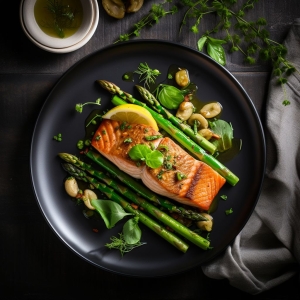The quality of what you eat and drink creates the foundation for your health or illness. To eat the most nourishing foods you can afford and have access to is vital to long term health.
The perspective of acidity concerning foods and drinks is similar to the ancient Ayurvedic system of high and low ash foods, and modern naturopathy of the mucusless diet. Ash and mucus being substances that clog up the inner space creating resistance to proper functions in the physical, nervous and energetic systems. Similar comparisons could be a haze of smoke or fog obstructing your vision, or sinus congestion making breathing difficult, or trying to speak clearly when there is a mucus ball in the throat. Except in this case the acidity or mucus is systemic – it is everywhere in your body.
“The quality of what you eat and drink creates the foundation for your health or illness.”
The connection is that the body uses mucus, cholesterol, water and dissolved calcium to neutralize acidity. When you are in the process of working to alkalize and detoxify the body, consuming acidic inducing foods and drinks could slow down the process and can be counterproductive to what you are working to achieve.
What to eat to alkalize
The best foods for detox are mainly fruits of all varieties. From the perspective of nutrient density, berries are denser in nutrients and antioxidants than melons and fruits. For practical purposes you can consume as much as you can find, considering seasonality and the place you live on the planet, and also budgetary considerations of course. Overall, fruits of all varieties are the best for detoxification and provide readily available nutrients without taxing the digestive process.
“The best foods for detox are mainly fruits of all varieties.”
Many often ask, “What about the sugar in fruits?” Fresh, raw fruit sugar is fructose which absorbs directly into the cells and does not need insulin produced by the pancreas to transport it into the cells like glucose. All the other forms of starch from grains, nuts, seeds, roots, vegetables, honey, even meat have to be broken down to glucose and need insulin like a taxi to transport it into the cells. The energy factory in the cells called mitochondria use the sugar molecules to produce energy.
In this sense fruit sugar from raw fruits is a superior food when you are detoxing because it requires minimal loss of energy. Whereas everything else you eat will require more energy to break down into the single element of glucose.
The human system runs on sugar so there is no way around it. Grains contain more sugar than fruits when broken down. This is why grains are complex carbohydrates and fruits are simple carbohydrates. So to make it simple—we can take in easy to digest fruit sugar or difficult to digest glucose sugar.
Sprouting is one of the very best and easiest ways to get proper nourishment. The sprouts are strongest, most packed with qi, protein, enzymes, vitamins and minerals during days 2-4. It is best to sprout a variety of beans and seeds enough for consumption within 2-3 days. You can learn how to do this on Youtube. If you are a vegetarian or vegan and your diet is not predominantly raw fruits and green juices then you may not be getting enough nutrients, sprouting is the best way to fill in the nutritional gaps.
Green juices are amazing. Although raw and cooked veggies are very good, the juice is better for alkalizing for the simple reasons of having more readily available nutrients and less energy expenditure towards digestion. Humans do not have enzymes to break down cellulose. This means you get minimal nourishment from a supposedly healthy bowl of salad and that’s why we mention green juices as the most efficient way to get the nutrients and alkaline effect.
Seaweeds are also an amazing source of nutrients, and the super minerals they contain are alkalizing. They are far superior than vegetables grown on land because of soil quality erosion through many decades of bad agricultural practices. Organic farms are better, but the food is nowhere as strong as it used to be. Therefore seaweed stands out as a super food and alkalizing agent.
What to avoid eating in order to alkaline
The major acidic, high ash, mucus food and drinks are meat, dairy, coffee, soda, caffeinated tea, pharmaceutical drugs, alcohol, nuts, seeds, chocolate and grains.
This may seem like “all the fun” stuff for some people. But with everything taken into consideration you can still do the best you can under the given circumstances. Try to eat as much fruit and green juices all day long if possible before you dive into the other foods. Work toward consuming 60%-80% of your overall food intake as fruits and then greens. It is definitely easier to do this diet if you live in the warmer climates. In colder climates you have to be proactive by freezing whatever you can find in the summer months. It takes some work and planning but its very doable.
Other major sources of acidity
Stress hormones like adrenaline and too much estrogen and testosterone in the body are extremely acidic. Therefore chronic stress is the number one contributor to many illnesses. Yoga, relaxation and balancing the sex hormones will go a long way in contributing to a healthy system.












